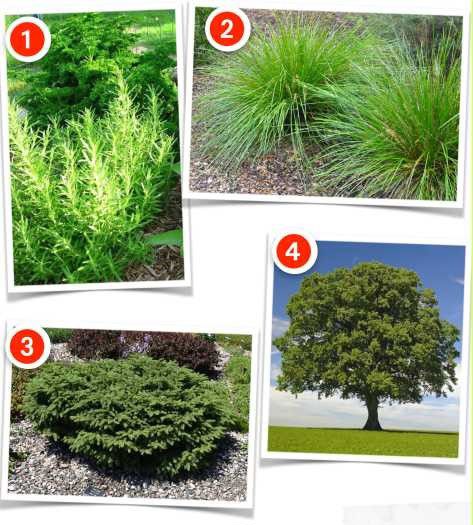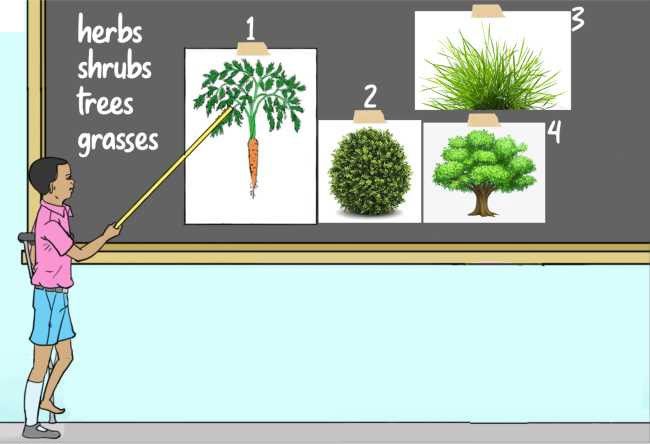Plants in our Locality
Activity 1.1: Identifying different plants in our locality
As you walk around your home and school compound, observe the plants growing in the locality. Collect simple plants. Observe their various parts. Describe their appearance.
- Use a digital device with a camera to take pictures of different plants in your locality.
- What parts do they have?
- Are the parts close to the ground?
- Are the stems weak, strong or hard?
- Are the leaves high up or close to the ground?
- In pairs, describe the parts of the plants you see in pictures 1 to 4.

Always take care of the plants in your environment
- Do not damage food crops.
- To protect useful plants in the environment, collect simple harmless weeds for observation. Where possible, take pictures.
- After the learning activity, use them as animal feeds or as mulches. Be guided by your teacher.
- In what other ways can you take care of plants? Share your ideas with others in school, at home and in the community.
Develop Interest about Plants in your locality
What are the various types of plants in our environment?
Most plants in our localities can be classified into the following types:
- herbs
- shrubs
- grasses
- trees
Identify some plants in your locality that have these parts:
- roots
- fruits
- leaves
- branches
- flowers
- stems
Find out from family and community members:
Do grasses have flowers?
Plants are part of God’s Creation.
In your Religion, what do the Scriptures say about plants?
- Share the knowledge with others.
Community Service Learning
Find out more from family and community members.
Be assisted to identify shrubs, trees, herbs and grasses that are useful and those that are harmful.
Share the information with friends, family and community members.
Activities
Activity 1.3: Differentiating plants in our locality
Work in pairs. Join Baraka’s presentation. He is identifying different parts of trees, herbs, shrubs and grasses.

- In a shrub, branches and leaves grow near the ground level.
- Trees are bigger than shrubs. Shrubs are bigger than herbs.
- A shrub has a thin stem.
- The branches of a tree are high above the ground.
- A tree has a thick woody stem.
- A tree has one main stem, also known as a trunk.
- In trees, herbs, grasses and shrubs, flowers grow seasonally.
- The roots of plants grow into the soil to support the plant.
- The flowers in plants develop into fruits.
Community Service Learning
Plants protect the soil from erosion. The roots hold the soil so that it is not washed away by running water or blown away by wind. In your community, help to plant cover crops to protect the soil from erosion. Various types of grasses are good cover crops.
Digital Lesson
Watch Digital Lesson 1. Differentiating trees, herbs, shrubs and grasses.
